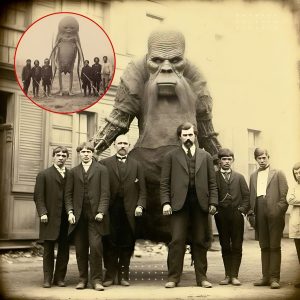In a groundbreaking discovery that has thrilled scientists and captivated the public, a well-preserved mammoth skeleton has been unearthed at a prominent archaeological site in North America. This remarkable find provides a rare glimpse into the prehistoric past, offering invaluable insights into the life and environment of these magnificent creatures.

A Remarkable Discovery
The excavation took place at the renowned La Brea Tar Pits in Los Angeles, California, a site famous for its rich deposits of Ice Age fossils. Paleontologists working at the site were astounded when they uncovered the nearly complete skeleton of a mammoth, a discovery that promises to enhance our understanding of these ancient giants.
The mammoth, believed to be a Columbian mammoth, one of the largest species to have ever roamed North America, was found in an exceptional state of preservation. The skeleton includes an intact skull with tusks, a rare find that allows scientists to study the animal’s anatomy in unprecedented detail.

The Significance of the Find
Dr. Emily Johnson, the lead paleontologist on the excavation, expressed her excitement about the discovery. “Finding a mammoth skeleton in such a well-preserved condition is a once-in-a-lifetime event,” she said. “This find provides us with a unique opportunity to study the life and environment of mammoths during the last Ice Age. It will help us understand their behavior, diet, and the reasons behind their eventual extinction.”
The discovery of the mammoth skeleton is expected to shed light on various aspects of prehistoric life. By analyzing the bones and tusks, scientists hope to determine the age, health, and even the migratory patterns of the mammoth. The site also contains plant and animal remains that can provide clues about the ecosystem in which the mammoth lived.

A Window into the Past
The La Brea Tar Pits have long been a treasure trove for paleontologists, yielding thousands of fossils from the Pleistocene epoch. However, the discovery of such a complete mammoth skeleton is unprecedented. It offers a rare opportunity to piece together a more comprehensive picture of the Ice Age environment and the creatures that inhabited it.
The mammoth skeleton will undergo careful excavation and preservation processes to ensure that it remains intact for future study. Researchers will use advanced imaging techniques and chemical analysis to examine the bones, aiming to reconstruct the mammoth’s life history.

Public Engagement and Education
The discovery has generated immense public interest, and the La Brea Tar Pits museum plans to feature the mammoth skeleton in a special exhibition. The museum’s director, Dr. Sarah Thompson, emphasized the educational value of the find. “This discovery not only advances scientific knowledge but also inspires curiosity and learning among the public. We are thrilled to showcase this incredible find and share its story with visitors of all ages.”
The exhibition will include interactive displays, educational programs, and opportunities for visitors to observe the ongoing research. By engaging the public, the museum hopes to foster a greater appreciation for paleontology and the importance of preserving our natural heritage.
Conclusion
The unearthing of a well-preserved mammoth skeleton at the La Brea Tar Pits marks a significant milestone in the field of paleontology. This extraordinary discovery offers a fascinating glimpse into the prehistoric world and promises to deepen our understanding of the mammoth’s life and environment.
As scientists continue to study the skeleton and unravel its secrets, the mammoth’s story will come to life, captivating the imaginations of both researchers and the public. This find not only highlights the importance of archaeological sites like the La Brea Tar Pits but also underscores the enduring fascination with the giants that once roamed our planet.
In the words of Dr. Emily Johnson, “Discoveries like this remind us of the incredible history beneath our feet, waiting to be uncovered and explored. The mammoth’s story is far from over, and we are just beginning to understand its place in our shared past.”





